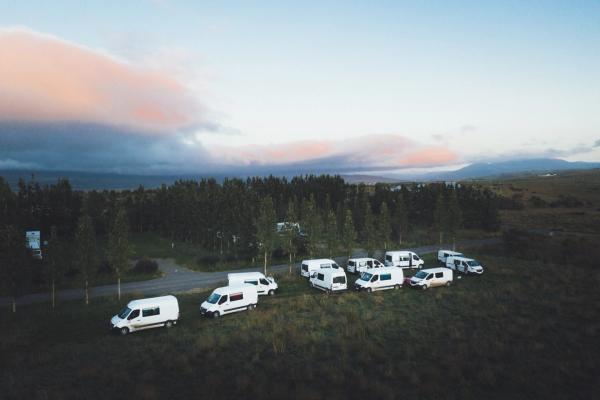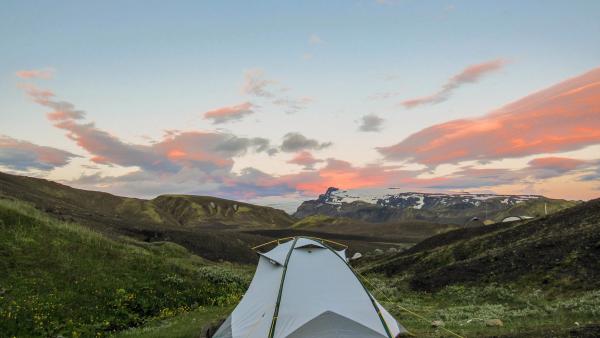
Is Wild Camping in Iceland Allowed?
Navigating the allure of wild camping in Iceland requires an understanding of the regulations and a spirit of adventure. Discover the ins and outs of camping amid Iceland's breathtaking landscapes with our informative guide. For those seeking the freedom to explore off the beaten path, a campervan rental Iceland proves to be an ideal choice. With our reliable campervan rentals, you not only gain the flexibility to choose your camping spots wisely but also ensure compliance with local rules and regulations. Dive into the details of wild camping in Iceland, and let our campervan rental services be your ticket to a memorable and compliant adventure amidst the country's untamed beauty.
Imagine it: you’ve driven your camper down a rough dirt road and found one of the most scenic spots of your whole trip. There’s no one else around to spoil the view, and it seems like the perfect place to spend the night. But is wild camping in Iceland allowed?
Wild Camping in Iceland: The Rules
The short answer to the question above is usually ‘no’. New rules regarding campervans came into being in 2015 to stop the Icelandic environment being damaged by the large number of campers. So, with a campervan, tourists in Iceland are legally required to stay overnight in a campsite.
But that doesn’t have to be a bad thing. There are still campsites that fly under the radar, at the furthest reaches of the country. And some have been set up with the best views in the area anyway. With hot showers, kitchens, and sometimes even a bar and restaurant nearby, these are the best bets for campervan travelers in Iceland.
Read: 5 Tips to Avoid the Summer Tourist Crowds in Iceland
Asking Farmers to Camp on Their Land
If you’re dead set on staying outside of the campsites, it is technically possible. With a campervan, you can ask landowners whether you can stay on their land or not. From the website of Iceland’s Environmental Agency, the rules are as follows.
When must I get permission from the landowner or rightsholder?
- If you plan to camp near places of human habitation or farms.
- If you plan to camp for longer than one night.
- If you plan to pitch more than three tents.
- If the land is cultivated.
- If you plan to use tent trailers, tent campers, caravans, camper vans, or similar outside organized campsites or urban areas.
It’s the last point there directly related to campervan customers. If denied by the farmer, you’ll have to relocate to a nearby campsite.

Wild Camping with a Tent in Iceland
Reading the above rules from Iceland’s Environmental Agency, you may have noticed that it is possible to wild camp with a tent. And you can do it for one night without asking permission if you find a patch of uncultivated land.
However, this can be difficult: a lot of the land around Iceland is cultivated. Not even locals 100% know where these patches of land are. And if you do find one? It’s also difficult to find a legal parking spot for your campervan while you set out with your tent.

Wild Camping in Iceland’s National Parks?
In Thingvellir National Park, it is illegal to stay anywhere outside of the legal campgrounds.
Things get a little bit easier at Snæfellsjökull if you have a tent with you and are hiking. You can get permission to camp inside the park from the ranger. Campervans must stay in the campsites.
Inside of Vatnajökull National Park, campervans must stay within the designated campsites. However, it is legal to pitch a tent outside of the campsites for one night. But that doesn’t go for the entire park; if you’re inside Jökulsárgljúfur, or around Askja, it’s illegal. Most of Skaftafell is illegal as well unless you hike the long 8-10 hours to the mouth of the Kjós River.
Our Advice
As you can see, the camping rules in Iceland are a bit hazy and hard to interpret. It used to be that you could pull over wherever you wanted with a campervan and stay the night, but things have changed. Around 2 million tourists arrived in Iceland in 2019, and with this huge influx of people, it’s incredibly important to protect the delicate Icelandic environment.
To avoid any trouble with the police or the locals, we highly recommend staying in the campsites. There are plenty of them around the country, and it’s a great place to meet other travelers as well. If they’re too crowded for your liking, do a bit of research before you go and seek out the quieter areas of the country. The East Fjords, the peninsulas of North Iceland, and the Westfjords are all great places to explore without the busy ring road crowds.
Conclusion
In short, while wild camping in Iceland isn’t as free as it once was, there are still ways to enjoy the country’s stunning landscapes responsibly. Campsites offer a hassle-free option with added amenities, and for those set on camping outside of them, getting permission from landowners is key. If you’re traveling with a tent, you have a bit more flexibility, but finding a legal spot can still be tricky. With Iceland’s rising tourism numbers, these regulations help protect its fragile nature—so sticking to designated areas isn’t just a legal requirement, but also a way to help preserve the landscapes for future visitors. Plan ahead, respect the rules, and you’ll still have an unforgettable camping experience in Iceland.
